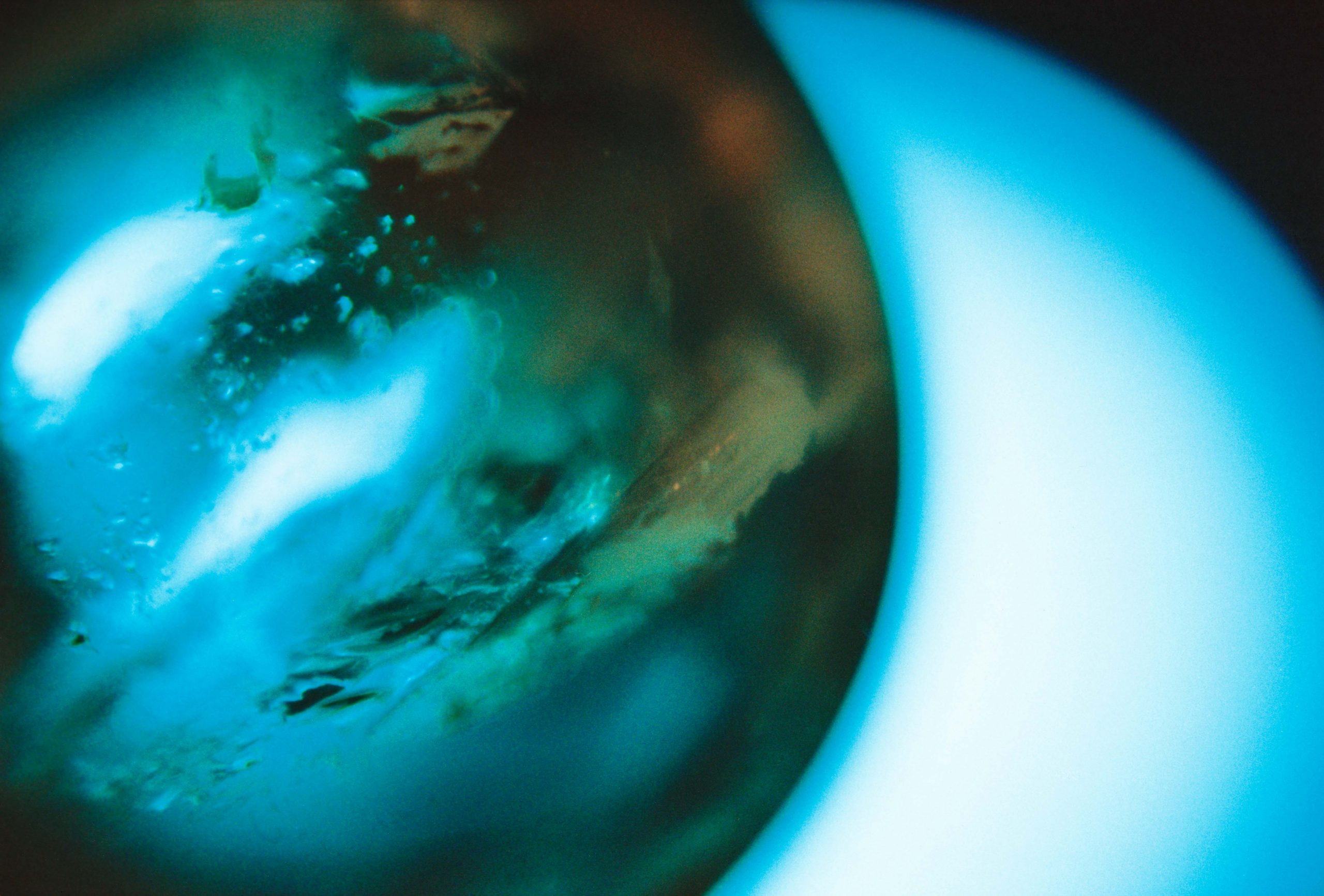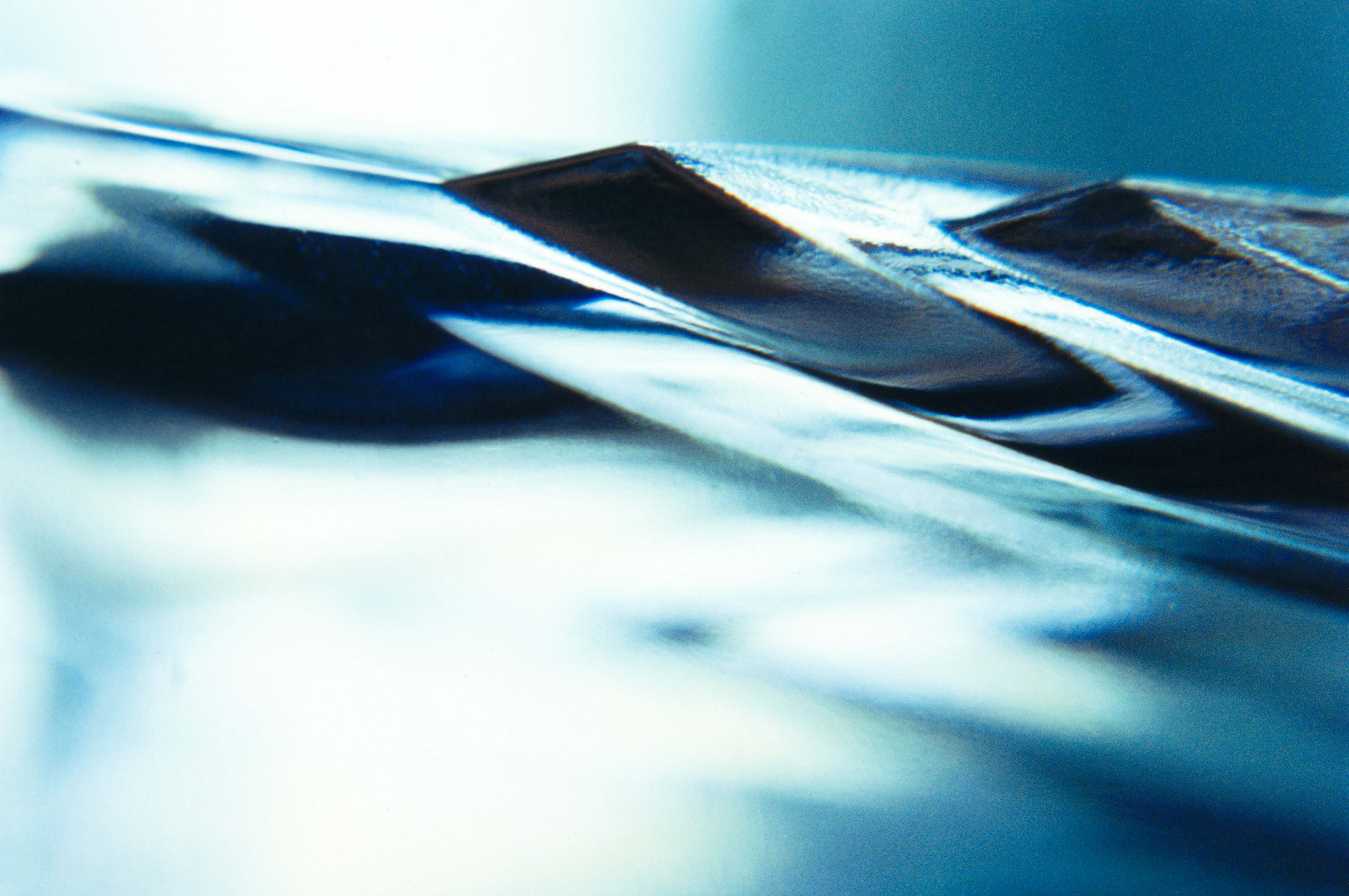
Becky Probert completed an MA in Photography at The Sir John Cass School of Art, Architecture and Design in East London in 2017.
Her photography centres around exploring patterns and details within her environment, and abstracting objects by taking them out of their original context, using the lens to transform them and playing with perceptions. She works with both digital and analogue techniques, and creates the colours and effects in her work through manipulation of lighting while shooting. Becky has a keen interest in physics and science fiction which has influenced the direction of her work.
Becky exhibited work from her project Under Different Skies at our Artificial Things exhibition in Cambridge. We loved the work and wanted to share it more widely, so here’s Becky, sharing the project in her own words…
We are brought up to believe that we can trust what we see with our own eyes. As such, we rarely think about the limitations of our own vision.
Our natural vision can be extended or improved through augmentation – from the glasses that correct shortsightedness to the advanced telescopes designed to help us observe the furthest possible reaches of our galaxy and what lies beyond. Yet this instrumentation still has its own inherent limits, and at times, the best it can do is ‘suggest’ rather than represent the full picture.
The stars that fill our skies have always fascinated mankind. Since the earliest days of our evolution, we’ve been obsessed with these lights. They’ve influenced our myths, religions, stories and technologies. The desire to know and understand more about the five ‘wandering stars’ visible to the naked eye led to the development of lenses and the study of physics. The inspiration found in the movements of the heavens has driven humanity to achieve truly remarkable things. As we are unable to walk through space and see these incredible sights first hand we look at the universe through a lens. All we see of the stars is their past, for the time it takes their light to cross the vast distances involved and reach our telescopes means that we are looking at their history, not their present. In the same way that wearing glasses for the first time as an eight year old child completely changed my perception of the world around me, what humanity has seen as our lenses have advanced over the centuries, and has vastly changed the perceptions of our existence and understanding of our place within the cosmos. No longer are we the centre of the universe, we are but one tiny part of an infinitely greater expanse. As physics has evolved from the classical to the quantum in the search for a unifying theory that brings everything together, we have learned that what is true for the macrocosm is also true for the microcosm. The atoms that make up the heart of a star and the forces that link them together are identical to those that make up our individual cells. By studying the cosmos, we are also studying ourselves. As the astrophysicist and author Carl Sagan said ‘We are all made of Star Stuff’.
As our theories about the nature of the universe have developed there are those within the scientific community that postulate that our universe exists within multiple dimensions, leading to the idea of alternate realities sitting alongside our own. As we cannot yet observe or measure these ideas with the resources we currently have available to us through our senses and technology, they remain firmly within the realms of concept, theory and imagination.
I use my camera to find new worlds within the ordinary, to find strange dimensions within common forms, things that cannot be perceived in the same manner with just our natural senses. The content of my images exists, it has not been created, merely represented through the lens. By exploring the details of these commonplace objects using a macro lens to look at them closely, the camera unlocks elements and transforms them into something that cannot be seen without the lens as intermediary. Through this technique, I am exploring the idea that the patterns found within the microscopic echo those found within the macroscopic.
I am re-imagining the universe, and our place within it, hinting at what lies beyond our normal perceptions. The smallest details within a piece of glass can open up a doorway through which you can conceive the vastness of entire galaxies.






All images © Becky Probert
Not a Shutter Hub member yet? Join here for opportunities to promote your work online and in exhibitions, access selected opportunities, events, seminars and workshops, meet up and share photographic experiences, and become part of our growing community…


























